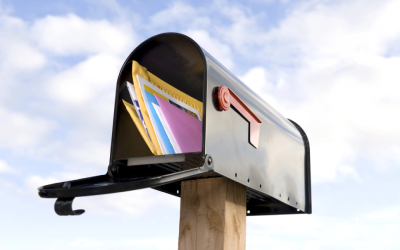When you need to buy mailing lists, an overview of direct marketing data providers starts with the big players (as in most industries.) You know who they are. That leaves the rest, a range of smaller enterprises, down to literal mom and pops (equally true in most industries.)
Does Size Matter When It Comes To Where You Buy Mailing Lists?
Part of the question concerns loyalty from – and toward – the professional staff, and how that affects performance. Large organizations certainly have greater financial resources, multiple locations, and often provide additional services beyond what we’re focused on here, which is marketing data. While such organizations are generally diversified and stable, distance from the centers of decision making means employee engagement can be strained. People may feel isolated, and estranged from participation in the company mission. Like anonymous cogs in a vast machine. This often leads to decreased productivity, restlessness, and contributes to churn. People come and people go. (“Patty has left the organization.”) The juggernaut steams on.
In smaller enterprises, the long term value of employee tenure takes on greater importance. Employees see themselves as stakeholders, immersed in the ongoing process of both learning, and honing the end product. It is not uncommon the see longer service at smaller companies. When skilled professionals and support staff feel engaged in the mission, they more likely they are to remain loyal.
It’s A People Business
If you know anyone who either owns or works in a small shop that has been in business for a long time, it is likely they’ll tell you, “Joe has been here for 14 years, Jane has been with us for over 20, Ann started here right out of school which was, oh, at least 10 years ago.” It’s certainly true in the data industry.
Why is that significant? A firm’s intellectual capital (experience, training, relationships) walks in and out the door every day, raising the stakes for retention. Experience is recognized. Accomplishments are rewarded.
Then there is the culture created by a flatter structure. Hierarchies are compressed. Departmental silos are less hardened because they can’t afford to be. People are more apt to have a comfort level with cross-disciplinary collaboration. Everyone has a better sense of what those who work upstream and downstream need to ensure collective success. Good ideas emanate from unexpected places. People work harder and smarter because they have to look their co-stakeholders in the eye every day. While victories are shared, dropped balls roll over everyone’s toes.
When Size Doesn’t Matter
When a data provider tells you they can comb the universe of over 80,000 lists and databases for the perfect data, it’s true. That universe spans data available in the public domain as well as proprietary databases maintained by the big credit rating firms. It includes subscriber lists from media outlets, publications and e-commerce sites. These may be self-represented or managed by a third party. The vast majority can be re-sold by any provider regardless of size. The difference lies in the relationship between data owners and data providers, plus pure professional skill.
Then there are new guardrails within which all data providers and end users must operate. Namely the EU’s recently enacted General Data Protection Regulation (GDPR). This affects everyone, particularly those who use consumer data in the EU, or who market to EU citizens regardless of where they work or reside. The key here is assurance that data has been collected (and of course how it is subsequently used) in compliance with GDPR.
How Do Marketing Data Users Benefit?
Every postcard, email or phone call you will ever receive from a mailing list broker or manager will promise the freshness and accuracy of their data. As well they should.
When an order comes in, it is the responsibility of the broker/manager to assess the need and find the mailing list data that best meets it. Customers are paying for more than a downloaded excel spreadsheet. When they buy mailing lists, they are paying for accuracy, deliverability, and a collective body of expertise seasoned with inspiration. Lateral thinking reveals fresh ideas. It’s not about filling an order by pushing a button, but really digging into a data file and pulling the most out of it.
By all means, direct marketers should maintain relationships with data providers that they trust. When opportunity knocks, and it’s all hands on deck, data users need to know that they have an ally in the effort. Whoever provides the highest data quality, consultative prowess, superior service, and consistent value and compliance best practices deserves the relationship.
That’s a package that can come in many forms, large and small. Just recognize the value of an organization that has a solid history of cohesion and performance. Buy mailing lists from a data provider that offers experience, insight, and a willingness to do the hard work. The one with great industry relationships, and an engaged, long-tenured core of professionals dedicated to delivering the best should be your one source for data.




